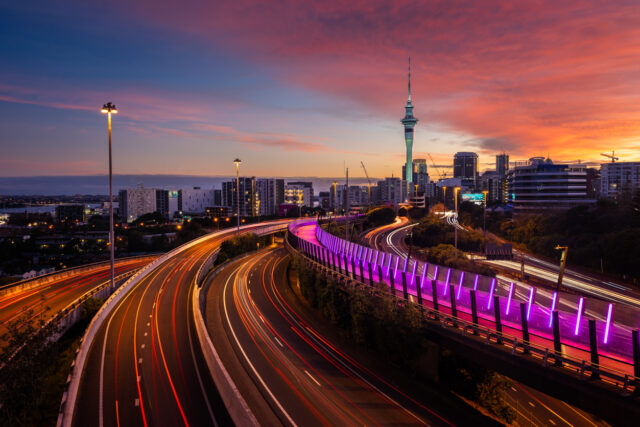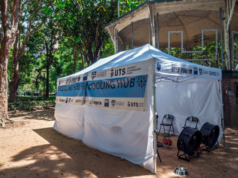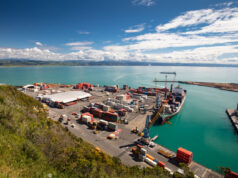By Steve Mooney
When infrastructure executive Sean Sweeney left New Zealand in September to lead the MetroLink rail project in Ireland, he did a number of interesting exit interviews.
Without local stakeholders to appease, Sweeney could be brutally honest about New Zealand’s infrastructure sector – and he was.
After heading the NZ$5.5b Auckland City Rail Link project for the last five years, Sweeney’s views are worth hearing. While some might see his comments as bitter parting shots, others could take them as constructive criticism on how New Zealand could improve its delivery of infrastructure projects.
In the National Business Review, Sweeney outlined some of the main challenges facing the development of infrastructure in New Zealand, and identified cost and Government sponsorship as the main issues.
The client, said Sweeney, was not always right and the client in New Zealand was most often the Government.
At the same time, he said, government and other partners in large-scale transport and other projects, shouldn’t be scared of “big numbers”.
He told NBR that he agreed with Prime Minister Christopher Luxon, that the country has lost its ‘mojo’ over the past 30 years.
“There was a palpable feeling in the 1990s that the Government should get out of projects and leave it to the private sector. Little happened as a result and, along the way, we seem to have lost the mindset and capability to run large programmes of public spending,” he said.
As it stands, he said, New Zealand doesn’t have a construction industry that can deliver infrastructure at any scale.
In another interview on TVNZ’s Q&A program, Sweeney was challenged on how and why the costs and timelines for the Auckland project – New Zealand’s biggest ever – had blown out.
His response was upfront. The estimated numbers were always estimates and they were overly optimistic, and he told his board that from day one.
“I didn’t think the numbers were right based on prior experience, because I know there’s enormous amounts of pressure on project teams to get a low number,” he said.
“These projects are just incredibly complex to price. And I’ve spoken to people in the industry, I’ve spoken to people in Australia, and they think projects of this size are actually almost impossible to price correctly, and that’s a challenge for the industry.”
Returning to the theme of New Zealand’s infrastructure ‘mojo,’ Sweeney said the country seemed to have lost its desire to do major projects because in the 1980s the view was that Government should get out of the way and let the private sector develop projects. The only trouble was, there was little incentive and the private sector did not step in.
“What happened after that was basically we stopped doing major public infrastructure for 30 years,” he said.
“I left New Zealand because there was nothing for me to do.”
He was lured back to New Zealand for the Auckland project and spent five years in the role, and while this was a major project it was a “one off” and not part of a wider infrastructure pipeline.
“At the moment we’re doing a series of one-offs, and as we’ve seen its incredibly hard for the industry to approach them efficiently,” said Sweeney.
“We’ve actually lost what I call the tier one construction industry in New Zealand in the last 20 years.
“We don’t have the capacity internally to do major projects, and that’s because the pipeline isn’t there for firms and staff to plan and work towards.”
He was also critical of the political class, and how their focus on electoral mandates was hindering the development of a multi-decade bi-partisan agreement on the future direction of the country and its infrastructure needs.
This was having a big impact on retaining skilled local people and attracting people from overseas.
“In Ireland, they have a long term infrastructure strategy that all the parties have signed up for and it means the industry can plan,’ said Sweeney.
“We don’t have that at the moment. Nearly all my tunnelling guys have gone. They have to, because they want to work.”
This meant that when another large project came along, New Zealand had to start from scratch, and that mean recruiting more people on expatriate terms, with the cost and logistics of their re-location.
“We have to do it differently to how we’re doing it, and that will require an approach we don’t have at the moment,” said Sweeney.
“It’s all do-able, but political parties would then give up absolute freedom to pursue their agenda, and that’s going to be the rub.”
His farewell words, however, were not all negative but rather a call to action for New Zealand to embrace change.
“I believe that infrastructure is a good thing for the country,” he said.
“So I’d like New Zealand to have a really big conversation about ‘what do we want to build in the next 30 years’ and what sort of country do we want to be. Because infrastructure is a way of taking us there.”
On that note, Sean Sweeney is off to Ireland. While his comments might not be welcomed by everyone, they are certainly food for thought as the Government makes infrastructure a national priority.
Perhaps by the time Sweeney has finished in Ireland he might return to his native New Zealand and find that conditions have changed, and the nation has its infrastructure ‘mojo’ back.














